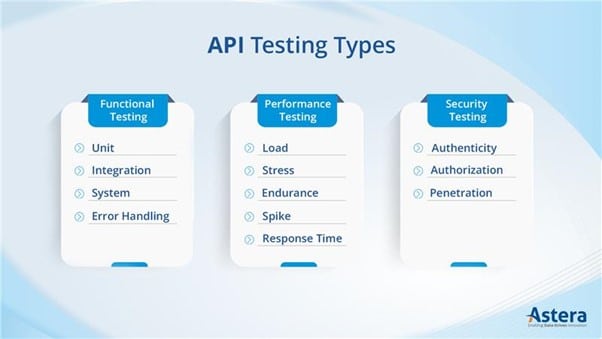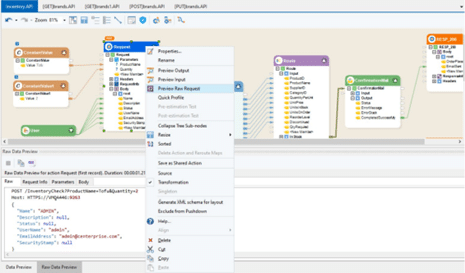According to the 2022 Global Industry Analysts Inc. Report, the global API testing market will grow to 1.8 billion USD by 2026. It’s not a surprising number, given that the success of APIs depends on their quality and reliability, which can only be determined through rigorous and continuous testing.
APIs play a crucial role in allowing systems and applications to communicate with each other and provide access to their core functionality to end users. It’s imperative to ensure the quality and reliability of these interfaces.
Here’s a guide to help you get started with API testing.
What is API Testing?
API testing is a process to analyze the functionality, performance, scalability, and security of APIs. It entails making requests to several endpoints and then analyzing if the response matches the expected results. This process includes testing the “happy path” scenarios and negative cases to ensure proper security checks are in place.
Additionally, it’s essential to test the API as a whole by simulating expected user journeys and server loads to ensure it can handle real-world usage.
A typical strategy specifies the combination of endpoints, the number of endpoints, the expected results, the ideal response time, and the criteria for an unsuccessful response. Ideally, you should have several test cases that analyze your APIs against all possible scenarios.
The Importance of API Testing
Many businesses rely on APIs to generate revenue and create a seamless customer experience. However, there are times when APIs don’t function as intended. This failure could happen for many reasons, such as a server being unresponsive, invalid inputs, insufficient permissions, and more.
Therefore, testing is a non-negotiable stage in the API management process. It helps identify bugs and inconsistencies before making APIs available to end users.
Here is how testing increases the quality of your APIs:
- Improved reliability: Reliable APIs, through functional testing, help reduce downtime, minimize the risk of errors, and improves their overall quality, resulting in a better user experience.
- Enhanced security: Penetration testing helps establish security by restricting unauthorized access, enabling better protection of a business’s data assets. It can help protect your business and users from cyber threats and data breaches.
- Increased efficiency: Performance testing improves the efficiency of APIs and helps determine if they can handle high loads and demanding conditions. It ensures that your APIs don’t break down frequently.
Types of API Testing
Conducting API testing at various stages of the API lifecycle, including the design stage, development phase, and post-deployment, is a best practice that provides several benefits.
By testing at the design stage, you can ensure that the API meets business logic and requirements, which helps improve their overall design. During the development phase, testing can verify that the API gives the appropriate response to requests and adheres to quality standards, allowing you to identify and resolve issues at the initial stages.
Testing after deployment help identify and fix issues that may have been missed during earlier API development stages.
Let’s check out the different types:

Functional Testing
Functional testing is all about verifying that an API does what it is supposed to do. It includes testing the input and output of an API, as well as checking its behavior under different conditions. Additionally, it includes checking parameter validations for the correctness of data types and values, categorizing valid or invalid requests, and checking that appropriate error messages are sent.
There are different categories of functional testing as well, including:
- Unit testing: It involves testing one component of an API, such as a specific method or function.
- Integration testing: It checks how an API works with other components or systems.
- System testing: It tests the entire API to ensure it is working as intended.
- Error handling testing: It ensures that an API is capable of handling all the errors. This includes testing for scenarios such as missing or invalid input values and unexpected conditions.
Performance Testing
Performance testing is an imperative step to ensure that your API can handle high loads under demanding conditions. It evaluates the performance of an API on several factors, such as: response time, capacity, and scalability.
Performance testing can include:
- Load testing: Tests an API’s performance under expected loads, such as the number of concurrent users or requests.
- Stress testing: Tests an API’s performance by gradually increasing the load to identify the maximum capacity of the API.
- Endurance testing: Tracks an API’s performance over a long period of time, such as several hours or days, to ensure it can handle the expected workload over an extended period.
- Spike testing: Ensures API’s ability to handle sudden spikes in workload.
- Response time testing: Measures an API’s response time to requests and verifies it meets the expected performance targets.
Security testing
API security testing helps verify that your API can protect sensitive data and systems from unauthorized access. Security testing includes evaluating API’s authentication and authorization mechanisms and testing for vulnerabilities.
Security testing can include:
- Authenticity testing: tests the API’s authentication mechanisms to ensure they are secure and prevent unauthorized access. For example, protection from hackers who are trying to impersonate another user to gain access to their sensitive data.
- Authorization testing: tests the API’s authorization mechanisms to ensure they are working as intended and prevent unauthorized access to protected resources. This means each user should only be accessing only their owned data (granular row level security).
- Penetration testing: simulates a cyberattack to identify vulnerabilities of the API that a potential attacker could exploit. This testing is done by using specialized algorithms that look out for code injections and stop such requests before they can cause any harm to the server.
Challenges of API Testing
While testing is a crucial stage, it can be quite time-consuming. From complex APIs with numerous endpoints to time constraints and resource limitations, there are many factors that can make testing challenging for organizations.
Here are some common challenges that you may encounter:
- Lack of resources: Testing can be resource-intensive, requiring specialized tools, skilled personnel, and a dedicated testing environment. Lack of funds or limited resources can hinder initiatives.
- The complexity of APIs: APIs can be complex, with multiple endpoints and dependencies, and can warrant the need for specialized tools and techniques.
- Changing requirements: You need to frequently update or modify APIs according to the evolving business requirements, which is not an easy task as it may require a complete overhaul of the testing strategy.
- Security concerns: Security testing requires expertise to verify that an API is protected from security breaches and unauthorized access. You need to test an API with all kinds of valid and invalid inputs to ensure that your API doesn’t leak data.
The Need for Automation
You’re more likely to face challenges if you opt for coding. According to the State of API report, 36.6% of developers write their tests in code, which is not only time-consuming but a rigid approach since you cannot easily incorporate changing requirements. The best way to mitigate challenges is through automation.
You can easily automate the manual aspects, such as writing code for each test and generating results. Automation also ensures that all parameters are tested thoroughly by identifying defects and issues you might miss if you did the testing manually.
The best way to automate the process is to use a no-code tool and management platform, which will save you time and ensure the reliability of your APIs.
Test Your APIs in a Few Clicks
Astera offers a unified complete API Management Solution with advanced, easy-to-use automated testing features. Every feature you need to build, test, and manage your APIs is provided in a single, intuitive, integrated, no-code environment.
Astera’s approach to building APIs emphasizes continuous testing and validation.

API Testing with Astera
The tool has the following powerful testing capabilities:
- Instant Data Preview: Fix API errors promptly by continuously testing and validating the design at every step of the development process using the instant data preview feature to make sure all your APIs are running properly.
- Post-Deployment Test Flows: Run automated and fully configured test flows after deployment to inspect your API performance in the target environment.
- Documentation for External Testing: Automatically generate Open API documentation that can be used and shared to call APIs from various external testing tools.
Nothing is easier than using our intuitive, drag-and-drop interface to test your APIs. With no-code testing, you can focus on what really matters: delivering high-quality, reliable APIs to your users.
Want to build a reliable and robust API? Try Astera API Management Solution today! Sign up for a free 14-day trial and see how it can simplify and streamline the testing process. Or schedule a demo with one of our experts and learn how to use our API lifecycle management solution to its full potential.






